
Termites, Cockroaches And Spiders can run but they can't hide from Micropest Pest Control Sydney.





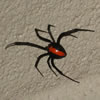
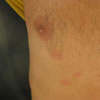

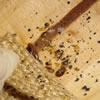


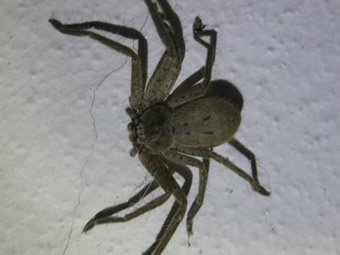
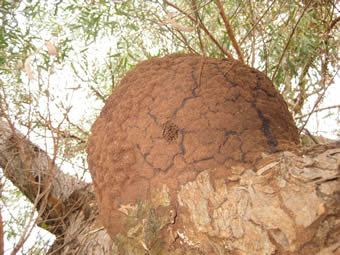
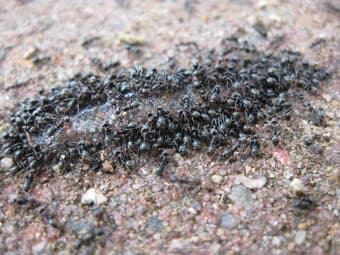
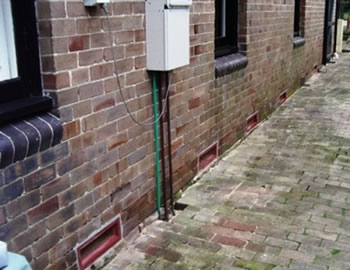
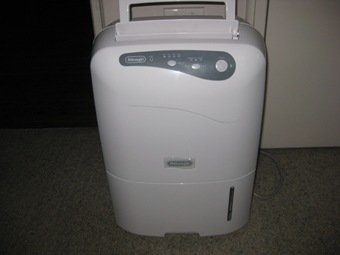
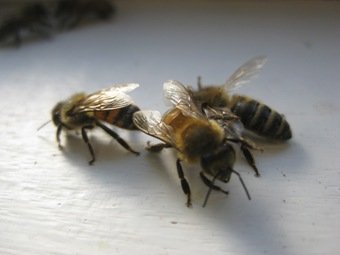
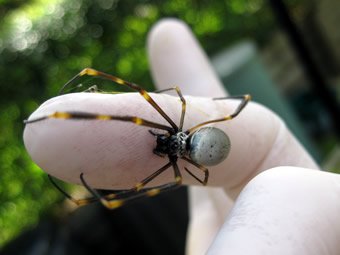
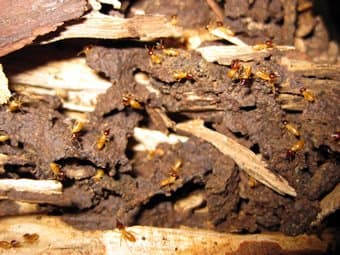
|
Sandflies, Midges and Sandfly Control SydneyThese very small blood-sucking flies are commonly referred to as sand-flies along the Australian coastline but in north-western New South Wales and western Queensland the "sand-fly" is a different type of fly altogether. "Biting midge" is the acceptable name for Ceratopogonidae in most parts of the world. Not all the biting midges suck the blood of mammals but the majority of those that do belong to the genus Culicoides. Members of this genus are widespread throughout New South Wales but are confined to coastal estuarine areas. 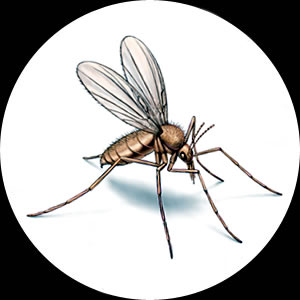 HabitatsImportant species of Culicoldes breed in wet sand along the banks of creeks, in sandbars where creeks enter estuaries and in the sandy flats behind or within mangrove areas. ln most cases the breeding, in so far as we understand it at present, takes place in tidal areas but above the level of the neap tide. Culicoides subimmaculatus, the dominant pest of the New South Wales coastline, has peaks of emergence coinciding with the neap tide period, hence mass attacks may occur no more frequently than fortnightly in summer and autumn, and indeed, mass emergences will not occur at every neap tide even when the weather is warm. There are several other minor pest species which do not appear to be so closely linked to the tidal cycle but even these can occur in sufficient numbers to be regarded as a nuisance from time to time. Adult densities are greatest close to breeding areas and sheltering may take place in mangroves but especially in low growing rank vegetation from which the flies will rise and attack suitable blood sources at all times of the day. Movement of adults takes place under calm, humid conditions with less than maximum light intensity. Characteristic periods of attack are at dawn and in the late afternoon. Wind will suppress biting activity and movement. Distance of migration from breeding areas is variable but half a kilometre is common and is possibly up to 5 kilometres in particular directions, usually up valleys, probably assisted by convectional air movements. Convection currents probably explain the observation that biting midges may be lifted up particular slopes to the tops of ridges adjacent to breeding areas. Situations exposed to dominant winds are not likely to experience noticeable populations unless a tree canopy also protects a growth of low growing vegetation. Flight is characteristically low to the ground. Health hazards of biting midgesBiting midges are not known to transmit human disease in Australia. However their attacks are often the cause of distressing irritation and bite reactions to sensitive people. The bite itself is not usually detected although a small red spot may appear, quickly fading later to an itchy pa pule. Itchiness is the first symptom detected by most people and commences I2 to 24 hours after the bites have occurred. This lack of awareness of the attack at the time it occurs makes it difficult for people to take precautionary measures unless the attack rate is sufficiently intense to be obvious or the particular locality has a notorious reputation for biting midge attacks. The delayed reaction pa-pule may subside within two to four days with only mild irritation, or may develop into a more persistent vesicle capped by a scab. These more intense reactions are associated with greater irritation and their seriousness increases directly with the number of bites received. Continuing exposures to attack may result in fresh bites being received daily. Nevertheless, even two or three bites may be regarded as distressing by hyper-sensitive people. Those who complain most are usually people experiencing the attacks of these flies for the first time, such as new residents in areas close to an estuary. The English appear to react more severely to biting midges than most other peoples. The reactions caused by these flies are allergic in type and early attacks sensitise the victim who envelops more severe reactions to later bites. Sensitive people who experience an annual attack in summer holiday resorts may well remain hyper- sensitive for long periods of years, whereas residents in the same resorts may be virtually unaware of the midge problem. The most important aspect of the reaction is the itchiness, which provokes scratching, which in turn increases the distress and may add a secondary infection to the original bite reaction. Any preparation which allays itching is useful. A simple calamine lotion, claratyne or telfast may succeed for some people but if adequate relief is not experienced a more specific anti-pruritic should be used. One which gives good results for many people is calimine lotion. Lotions containing anti-histamines are commonly used without much success. If serious reactions are experienced, medical attention should be sought. Another biting midge belonging to the genus Leptoconops appears in the sandstone gulleys of the Berowra-Bobbin l-lead area each year about October and November. This species is typically a daytime head biter, especially inside the ears of animals and around the hairline on humans. lt also bites close to the eye and can cause "bung eye", a gross but painless swelling of both lids with even complete closure of the eye. Other species of the same genus occur elsewhere in New South Wales; their attacks may occasionally be significant but they would not be recognised as distinct from other biting midges or black-flies by members of the public, hence information is scanty. The breeding places of this particular type of midge have not yet been discovered in Australia. Personal protection for residents of infested localities may be a matter of understanding the local conditions which favour midge abundance and their attack habits with a view to avoiding exposure at significant times. Reduction of close-to-the ground harbourage for resting adults may be of some assistance especially if the area of mown grass is fairly extensive. However, invasions, when they occur, are often swift. An insecticidal approach is of limited value, space sprays or fogs giving protection for only 30 minutes to 24 hours because of the likelihood of re-invasion. Smoke from a smouldering Ere is often protective. Mosquito repellent lotions applied to the skin of exposed areas are effective for a period, usually a couple of hours, but cannot be relied on for periods much longer than this. Although they are not removed completely by immersion in water, they are by excessive perspiration so that the period of protection may be related to the amount of physical activity. If repellents are used the results will improve if their use coincides as closely as possible with the known period of attack. Repellents are available as lotions, cream and aerosols and any one of these formulations may be more effective than the others depending on the conditions under which it is used. A special use for an aerosol formulation is on the throw-over net (if mosquito netting is used through which biting midges are able to pass) used to cover a baby`s pram, the treatment taking place before the baby is placed beneath the net. Many repellents contain ingredients which are irritant to mucous membranes and the genitals, and are also plastic solvents. For this reason, and particularly in the application of repellents to children, care should be taken and the product should be used with discretion owing to the possibility of transfer by hand from a treated area to eyes or lips; in any case, repellents should be applied judiciously. There have been reports that "baby oil" on the skin provides a mechanical barrier and substantially reduces bites. ControlLittle can be done by the individual in the way of control since breeding areas are characteristically outside the limits of residential areas. The problem is an increasing one due to expansion of coastal towns into the peripheral areas where biting midges breed and because of the greatly increasing use of coastal lagoons for holidays and recreation. ln the urban environment the process of reclamation of waste low-lying land will do much to hasten the reduction of this pest and could well be accelerated on these grounds. Tidal waters rising and falling against a vertical surface such as a seawall eliminate the midge problem for the length of foreshore so treated. Although reclamation has been in disfavour because of rising costs in recent years it is again coming into prominence and he development, in this country, of cheaper techniques of providing spoil by sand pumps will eventually do much to eliminate many active breeding areas of biting midges. However, the construction of housing areas by reclamation, incorporating "key` '-type individual residential access to coastal waterways in NSW, may result in the production of extensive breeding areas in the tidal sandy margins as has occurred in some areas of Queensland. Also, some forms of reclamation undertaken for mosquito control, which achieve only the elimination of surface water but do not lower the water table well below the surface, can create midge breeding areas. This has happened recently in Queensland but has been a well-known fact for years in the United States. Insecticidal treatment of breeding areas may still have some place. Effectiveness and economic operation both depend on precise knowledge of the more special breeding areas within the broad expanse of estuarine mud and sand. Potential biting midge areas are characteristically extensive and square miles of country may be involved. Treatment of breeding areas with persistent insecticides prior to emergence of adults has shown promise but this technique is as yet beyond the scope, in terms of finance, equipment, and trained personnel, of most local authorities, and is unlikely to meet with unqualified approval from the conservation-minded. Aerial application of non-persistant. Persistent insecticides at the predicted times of mass emergence has shown more promise of SUCCESS . For larval control temephos would be suitable; for adult control maldison or naled. Strategic fogging against adults may be practicable, but it is 23 necessarily repetitive, costly, and at best only a relief measure. Household aerosols are of little use as most attacks occur out»of-doors. ln any case, where biting midges are really a problem, the ultimate success of insecticidal methods would almost certainly be materially assisted by the reduction of the problem area by judicious reclamation practices. lf there are alternatives available in the areas selected for reclamation, those presenting the greatest nuisance in mosquito and biting midge production might well be selected first. Recently gained knowledge of the biology of certain of the coastal pest species has been applied to pilot control projects in Queensland. When individual areas are carefully surveyed the actual breeding zones appear to be far more limited than can be assumed without local investigation. If these areas of active breeding are defined they can then be considered for elimination, for destruction of adult harbourage or for insecticidal treatment. At present successful temporary control is being achieved in small problem areas by the use of strategically timed, non-residual insecticidal fogging of breeding areas so that adult midges are killed shortly after their mass emergence at the period of neap tide. Overall, repellents are probably the most appropriate measure when at risk of being attacked. Cardinal points in midge control The biting midge problem is more difficult than any associated with mosquitoes since the immature stages cannot be readily seen and techniques for their recovery are laborious and highly specialised Since critical knowledge of this problem is only beginning to emerge the primary essential is more research. For the time being it is important that each infested area should be considered as an individual problem, at least until enough is known to reveal common factors which can be assessed on inspection. Sand-flies control price listMicropest provides the following Sand-flies pest control service with an approximate price. Please don't hesitate to ring because we do have specials from time to time and we are flexible.
Our Locations WahroongaAddress: 24/24-36 Pacific Highway, Wahroonga N.S.W 2076 Phone:1300 243 377 Hours: Open 7 days, 7 am–10 pm We provide the same day emergency services for the Upper North Shore suburbs of Wahroonga, Pymble, Hornsby, Turramurra, Westleigh and Thornleigh. BerowraAddress:111 Yallambee Road Berowra, Sydney N.S.W 2081. Phone:(02) 9489 0013 Hours: Open 7 days, 7 am–10 pm We provide the same day emergency services for Berowra, Galston, Arcadia, Brooklyn, Mt White, Mt Colah and Asquith. ArtarmonAddress: 43 Whiting St, Artarmon NSW 2064 Phone:1300 884 166 Hours: Open 7 days, 7 am–10 pm We provide the same day emergency services for the Lower North Shore suburbs of Artarmon, Chatswood, Lane Cove, Roseville, Lindfield, Killara, North Sydney, Neutral Bay, North Bridge and Castlecrag. |

|
|||||||||||||||||